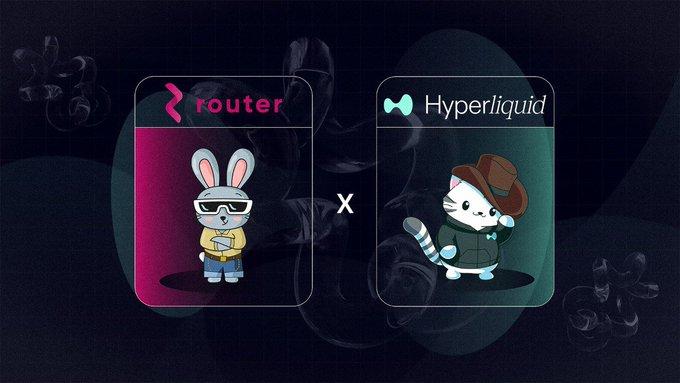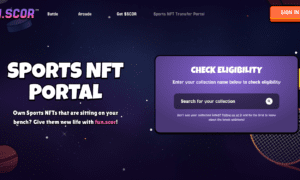Router Protocol: Reach your users where they are.
Router Protocol is redefining cross-chain communication, offering a superior alternative to traditional blockchain bridges. With its advanced Cross-Chain Intent Framework (CCIF), modular architecture, and robust security measures, Router Protocol is addressing the inefficiencies and vulnerabilities that plague traditional bridges. Here’s an in-depth comparison of Router Protocol and traditional bridges, highlighting what makes Router the superior choice in blockchain interoperability.
The Challenges with Traditional Bridges
Traditional blockchain bridges have long been the go-to solution for transferring assets between different blockchains. However, they come with significant limitations that hinder their scalability, security, and user experience.
1. Liquidity Fragmentation
Traditional bridges often lock assets on the source chain and mint equivalent tokens on the destination chain. This process fragments liquidity across multiple chains, making it inefficient for users to access and utilize their funds seamlessly. For example, users may end up managing multiple wrapped tokens across various networks, complicating liquidity management.
2. Security Risks
Bridges are frequent targets for hacks due to their centralized or semi-centralized architectures. Vulnerabilities in smart contracts or validator nodes can lead to significant asset losses. High-profile bridge hacks like the $600 million Ronin Bridge exploit underscore these risks.
3. Slow Transaction Speeds
Cross-chain transfers via traditional bridges involve multiple steps- locking, minting, verifying, and finalizing transactions across different networks. These steps introduce delays, especially when the networks have varying consensus mechanisms.
4. Complex User Experience
Traditional bridges often require users to navigate cumbersome interfaces and multi-step processes. For non-technical users, this complexity can be overwhelming and a barrier to adoption.
Router Protocol: The Superior Choice
Router Protocol offers a modular framework
Router Protocol overcomes these challenges with its innovative framework and advanced features. Let’s explore what makes Router Protocol stand out.
1. Unified Liquidity Through Zero-TVL Architecture
Unlike traditional bridges that fragment liquidity by locking assets, Router Protocol employs a zero-TVL (Total Value Locked) model, eliminating the need to hold assets in bridge contracts. This approach enhances security while ensuring liquidity remains unified across chains.
2. Advanced Security Measures
Router Protocol leverages a decentralized architecture built on the Cosmos SDK and Tendermint’s Byzantine Fault Tolerant (BFT) consensus mechanism. This ensures high levels of security and reliability by requiring two-thirds of validators to agree for transaction finality.
3. Speed and Cost Efficiency
Router Protocol’s infrastructure enables cross-chain transactions in under 20 seconds, significantly faster than traditional bridges. Moreover, it reduces transaction costs by up to 70%, making it a cost-effective solution for users and developers alike.
4. Cross-Chain Intent Framework (CCIF)
At the heart of Router Protocol’s innovation is its Cross-Chain Intent Framework (CCIF). This framework simplifies complex cross-chain workflows into single-step processes:
- Users can execute actions like staking or swapping assets across chains without manual intervention.
- Developers can build interoperable dApps (iDapps) using intent adapters and solvers that abstract technical complexities.
For example, a user holding USDC on Polygon can seamlessly stake it on Avalanche with just one transaction, something that would require multiple steps on a traditional bridge.
5. Modular and Developer-Friendly Architecture
Router Protocol offers a modular framework that lets developers customize their specific applications according to their requirements:
- Middleware contracts enable application-specific bridging logic.
- Plug-and-play tools simplify the development of cross-chain dApps.
This flexibility makes Router an ideal choice for building scalable DeFi applications, blockchain gaming platforms, and NFT marketplaces.
Strategic Integrations: Hyperliquid & Solana
Source| Router Protocol is creating waves with Hyperliquid Integration
Router Protocol’s partnerships further solidify its position as a leader in blockchain interoperability:
- Hyperliquid Integration: As Hyperliquid’s official bridge for its EVM chain, Router enables seamless cross-chain deposits from over 30 blockchains. This integration eliminates multi-step processes for traders while generating transaction fees used to buy back $ROUTE tokens.
- Solana Integration: By connecting Solana with over 25 blockchains, Router unlocks new opportunities in DeFi, gaming, and NFTs within Solana’s ecosystem.
The $ROUTE Token: High Growth Potential
The $ROUTE token serves as the gas token for transactions on the Router Chain and plays a key role in governance decisions. Despite its advanced technology and growing adoption, $ROUTE remains undervalued compared to competitors like Wormhole and LayerZero.
Factors Driving $ROUTE Growth
- Scarcity: With a capped supply of 20 million tokens, $ROUTE benefits from scarcity-driven value appreciation.
- Utility: The token is used for transaction fees, staking rewards, and governance within the ecosystem.
- Buyback Mechanisms: Fees generated from integrations like Hyperliquid are used to repurchase $ROUTE tokens, driving demand.
Analysts predict that $ROUTE could reach $10 soon, a significant increase from its current price- positioning it as one of the most promising crypto investment opportunities in the market.
Conclusion
Router Protocol is not just an alternative to traditional bridges – it’s a superior solution that addresses their fundamental flaws while unlocking new possibilities for blockchain interoperability. With its zero-TVL architecture, advanced security measures, and developer-friendly tools like CCIF, Router is setting new standards in cross-chain communication.
As its ecosystem expands through strategic integrations with platforms like Hyperliquid and Solana, Router Protocol is well-positioned to achieve a billion-dollar market cap. For developers building interoperable applications or investors seeking high-growth crypto opportunities, Router Protocol stands out as a clear leader in the blockchain space.
For more information, visit Router’s website at www.routerprotocol.com. You can also follow the community on X and Telegram to know all the latest insights on the $ROUTE token.





































